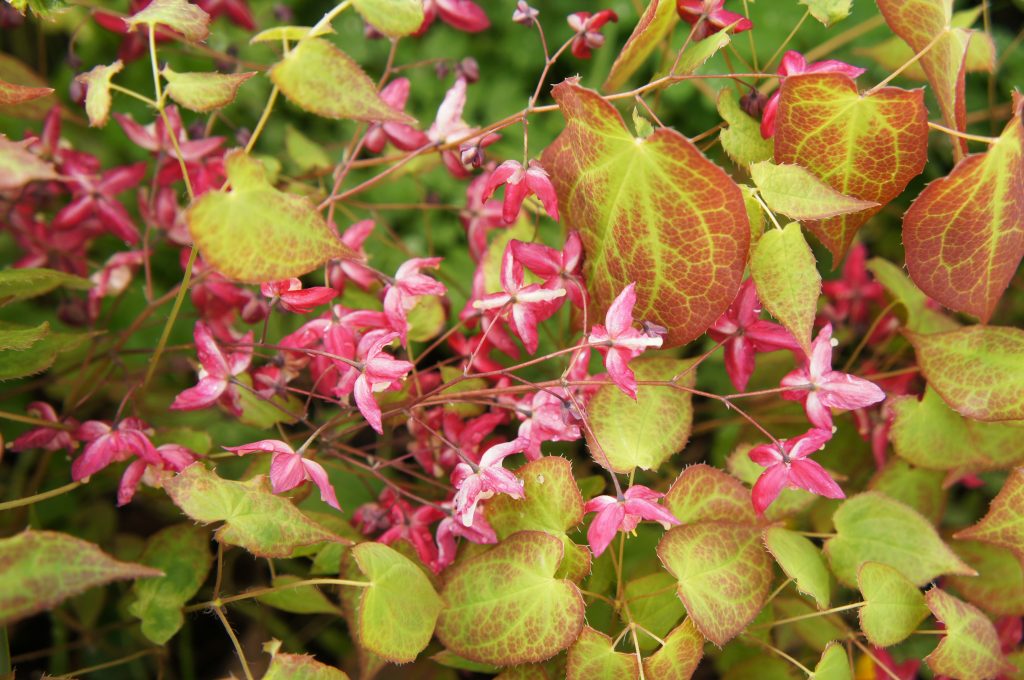
Perennial groundcovers play an important role in the landscape. Although the most common groundcover in the residential landscape is turf, in many situations, grass is not practical or desired. Perhaps the conditions are not right to grow grass, or you prefer a lower maintenance alternative, or you just don’t care for grass. While low growing ground cover plants are great for using as an alternative lawn, particularly in shady areas, there are also a plethora of groundcovers available that are suitable for anchoring the garden bed with low growing flowering plants, filling spaces between flagstone or pavers, preventing erosion on slopes or for creating a “living mulch” that is visually attractive and helps to suppress weed growth. There are an abundance of groundcover choices for nearly every location, application, and situation.

Ground covers are:
- Low growing plants that spread easily.
- Meet two basic criteria: first, they should be vigorous enough to fill in the desired area and second, they should be attractive enough to provide some visual interest to the landscape.
- Can be useful in “difficult” areas: cover slopes and prevent erosion where mowing is impractical, in shady areas where grass does not grow well, for cover in hot, dry areas, and in high traffic area where grass does not hold up well.
- Good solution to sprucing up awkward areas under trees and accent areas along paths and foundations.
There are two general categories of groundcover- clumpers and spreaders. Clumping groundcovers, like hostas, tend to be more upright and spread slowly outwards. Clumping groundcover works best with mass planting and are typically slow-growing and provide well defined borders. Spreaders, like pachysandra, completely blanket an area. Clumpers and spreaders can work together in the same area, providing further visual interest given the diversity of greenery, texture and heights of the different plants.
Once your groundcover is planted and established, it should be fairly low maintenance. Yearly application of a balanced fertilizer can promote vigorous growth but it is generally not required. Consider pruning or thinning plants in spring or early fall if growth is too dense. The appearance of herbaceous groundcovers may be improved by removing dead foliage in early spring. All groundcovers will benefit from a thorough spring and fall cleanout of dead leaves and debris
These basic steps will help you identify and install the best groundcover for your particular location and application. Please consult our knowledgeable garden center staff to further assist you in choosing plants that are well suited to your particular site.
- Determine the conditions of your site.
- Sun and shade patterns – Full sun, dense shade or somewhere in between?
- What type of soil? Clay, sandy, or in between?
- Traffic pattern – Will there be foot traffic or is it protected?
- Prepare your site.
- To assure proper establishment, remove all existing vegetation from the area, paying particular attention to weeds that may re-grow from underground roots. Applying herbicide may be necessary to control some weeds; confer with an expert to help choose the right type.
- Check soil acidity, adjust and amend the bare soil with compost or other organics appropriate for the new plants.
- Until the new groundcover has established, remove any unwanted weeds that appear.
- Choose the right plants for your site.
- Do you want fast coverage of a large site? Choose a spreader.
- Is it a fairly circumscribed area? Think about a clumping groundcover.
- Do you want an evergreen or a deciduous groundcover?
- Do you want flowering plants?
- Low growing or tall?
- How many plants?
- Spreaders, as a rule of thumb, can be planted 8-12 inches apart.
- Clumpers should be planted to reflect their width at maturity.
- Stake or mark out the area with a marking paint to make it easy to determine the amount of plants needed to properly fill the area.
- Cover bare soil between newly planted groundcover plants with mulch to suppress weed growth until plants have had time to spread.
Groundcover List
Many landscape designs require plants that function well as groundcovers. We have developed this groundcover chart that includes key characteristics of each plant to help you determine which plant would be best suited for your particular needs. Stems/foliage should be intermeshing in 2 to 3 growing seasons under normal conditions when you plant on center at the recommended spacing.
Fullscreen Mode








